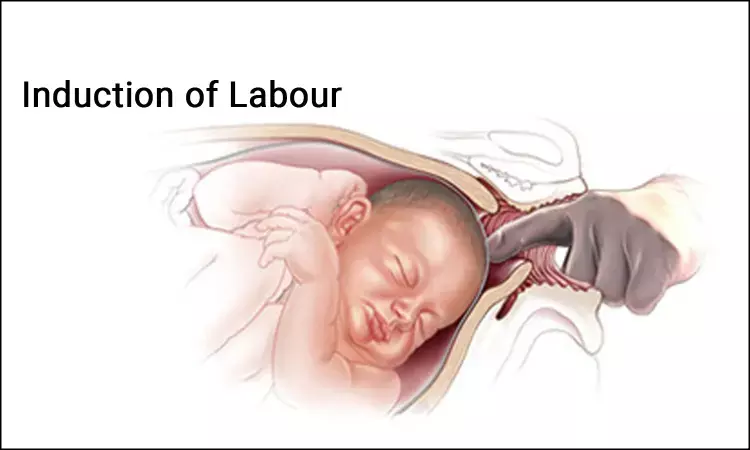- Home
- Medical news & Guidelines
- Anesthesiology
- Cardiology and CTVS
- Critical Care
- Dentistry
- Dermatology
- Diabetes and Endocrinology
- ENT
- Gastroenterology
- Medicine
- Nephrology
- Neurology
- Obstretics-Gynaecology
- Oncology
- Ophthalmology
- Orthopaedics
- Pediatrics-Neonatology
- Psychiatry
- Pulmonology
- Radiology
- Surgery
- Urology
- Laboratory Medicine
- Diet
- Nursing
- Paramedical
- Physiotherapy
- Health news
- Fact Check
- Bone Health Fact Check
- Brain Health Fact Check
- Cancer Related Fact Check
- Child Care Fact Check
- Dental and oral health fact check
- Diabetes and metabolic health fact check
- Diet and Nutrition Fact Check
- Eye and ENT Care Fact Check
- Fitness fact check
- Gut health fact check
- Heart health fact check
- Kidney health fact check
- Medical education fact check
- Men's health fact check
- Respiratory fact check
- Skin and hair care fact check
- Vaccine and Immunization fact check
- Women's health fact check
- AYUSH
- State News
- Andaman and Nicobar Islands
- Andhra Pradesh
- Arunachal Pradesh
- Assam
- Bihar
- Chandigarh
- Chattisgarh
- Dadra and Nagar Haveli
- Daman and Diu
- Delhi
- Goa
- Gujarat
- Haryana
- Himachal Pradesh
- Jammu & Kashmir
- Jharkhand
- Karnataka
- Kerala
- Ladakh
- Lakshadweep
- Madhya Pradesh
- Maharashtra
- Manipur
- Meghalaya
- Mizoram
- Nagaland
- Odisha
- Puducherry
- Punjab
- Rajasthan
- Sikkim
- Tamil Nadu
- Telangana
- Tripura
- Uttar Pradesh
- Uttrakhand
- West Bengal
- Medical Education
- Industry
Vaginal misoprostol as effective as dinoprostone pessary for induction of labour,finds study

In a recent development , the noninferiority of 25-μg misoprostol every four hours to the dinoprostone pessary for cesarean delivery (CD) rates after induction of labour (IOL) at term could not be demonstrated, although results from the study highlighted that the confidence limit of the difference barely exceeded the noninferiority margin. Findings have been published in American Journal of Obstetrics & Gynecology.
Induction of labor is among the most common procedures for pregnant women. Only a few randomized clinical trials (RCT) with relatively small samples have compared misoprostol to dinoprostone. Although their efficacy appears similar, their safety profiles have not been adequately evaluated and economic data are sparse.
With this in mind, a team of researchers from Department of Obstetrics and Gynaecology, Paule de Viguier Hospital, France aimed to test the noninferiority of vaginal misoprostol (PGE1) (25 μg) to a slow-release dinoprostone (PGE2) pessary (10 μg) for induction of labor with an unfavorable cervix at term.
The study design consisted of a Open-label multicenter randomized noninferiority trial at 4 university hospitals of the Research Group in Obstetrics and Gynecology (GROG) between 2012 and 2015. They recruited women with labor induced for medical reasons, a Bishop score ≤ 5 at ≥ 36 weeks, and a cephalic-presenting singleton pregnancy with no prior cesarean delivery. Women were randomly allocated to receive either vaginal misoprostol at 4-hour intervals (25 μg) or a 10-mg slow-release dinoprostone pessary.
The primary outcome was the total cesarean delivery rate. Noninferiority was defined as a difference in the cesarean delivery rates between the groups of no more than 5%. Secondary outcomes included neonatal and maternal morbidity, vaginal delivery < 24 hours after starting the induction process, and maternal satisfaction.
Data analysis revealed some interesting facts.
- The study included 1674 randomized women. The per-protocol analysis included 790 in each group. The total cesarean delivery rate in the misoprostol group was 22.1% (n=175) and in the dinoprostone group, 19.9% (n=157), for a difference between the groups of 2.2% (with an upper-bound 95% confidence limit of 5.6%), P=.092. Results in the intention-to-treat analysis were similar.
- Neonatal and maternal morbidity were similar between groups. Vaginal delivery within 24 hours was significantly higher in the misoprostol group (59.3% vs 45.7%, P<.001) as was maternal satisfaction, assessed in the postpartum period by a visual analog scale: mean score: 7.1 (SD 2.4) vs 5.8 (3.1), P<.001.
Observing the results, the research team concluded that "Nonetheless, given the small difference between these cesarean rates and the similarity of neonatal and maternal morbidity rates in this large study, the clinical risk-benefit ratio justifies the use of both drugs."
For full article follow the link: https://doi.org/10.1016/j.ajog.2021.04.226
Primary source: American Journal of Obstetrics & Gynecology
Dr Satabdi Saha (BDS, MDS) is a practicing pediatric dentist with a keen interest in new medical researches and updates. She has completed her BDS from North Bengal Dental College ,Darjeeling. Then she went on to secure an ALL INDIA NEET PG rank and completed her MDS from the first dental college in the country – Dr R. Ahmed Dental College and Hospital. She is currently attached to The Marwari Relief Society Hospital as a consultant along with private practice of 2 years. She has published scientific papers in national and international journals. Her strong passion of sharing knowledge with the medical fraternity has motivated her to be a part of Medical Dialogues.
Dr Kamal Kant Kohli-MBBS, DTCD- a chest specialist with more than 30 years of practice and a flair for writing clinical articles, Dr Kamal Kant Kohli joined Medical Dialogues as a Chief Editor of Medical News. Besides writing articles, as an editor, he proofreads and verifies all the medical content published on Medical Dialogues including those coming from journals, studies,medical conferences,guidelines etc. Email: drkohli@medicaldialogues.in. Contact no. 011-43720751


